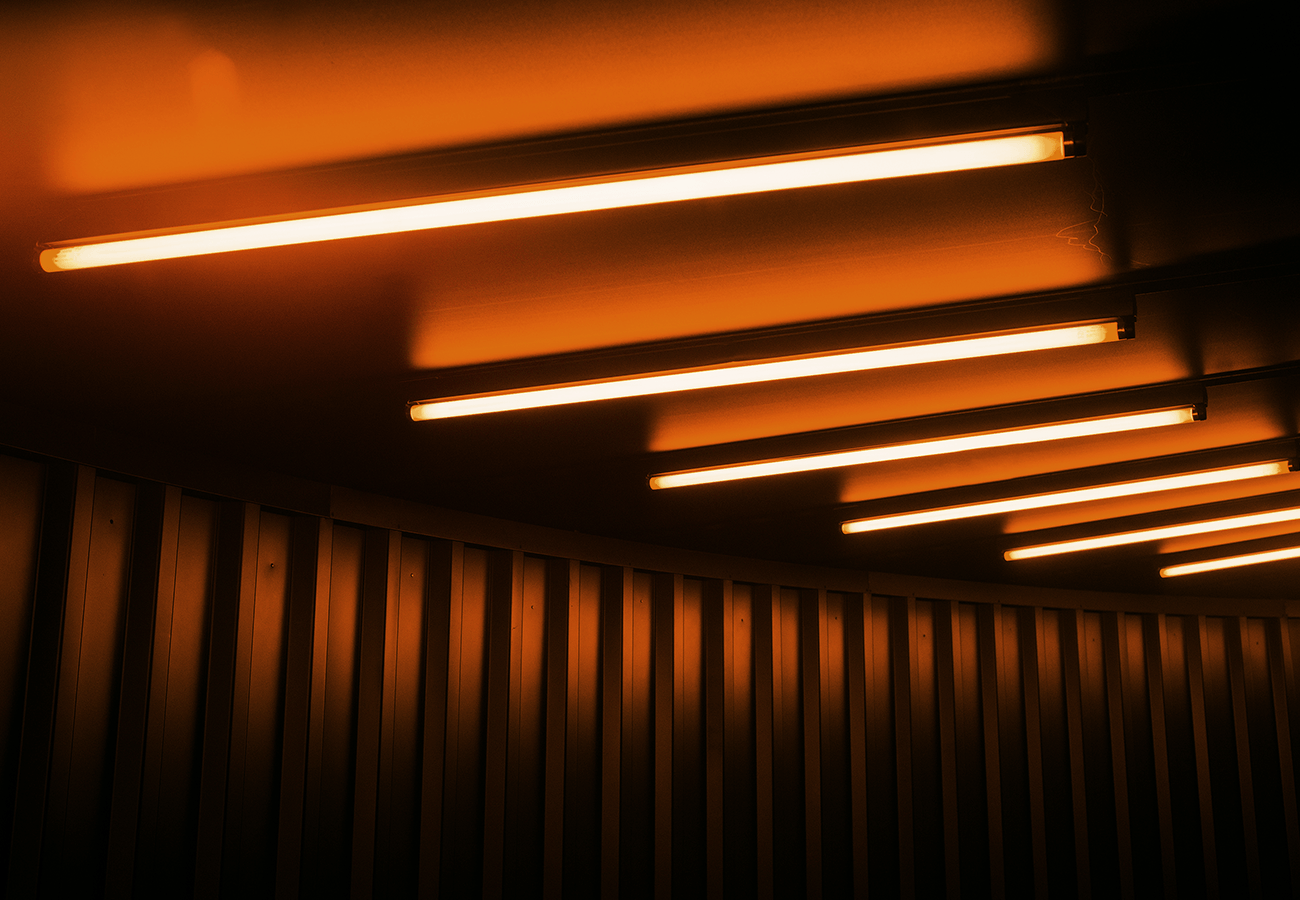Fluorescent ban precedes new intelligent beginnings

The buzz and flickering of the fluorescent lamp shall soon be confined to the horror movie genres of yesteryear as the EU’s ban on the sale of fluorescent lighting soon comes into effect. This critical juncture presents a great opportunity to go wireless with Casambi.
Just as Miethe and Gaedicke mixed magnesium powder with potassium chlorate to produce the ‘Blitzlicht’ (the first camera flash back in the 1800s), by some extraordinary alchemy, humanity harnessed gas to provide continuous neon luminescence. Who knew that a chemical reaction involving gases and mercury vapor could produce UV light inside a glass tube, illuminating a phosphor coating to emit magnificently bright light? Magic!
Famed for their highly efficient abilities to light large areas, fluorescents fast became the de facto lighting for factories, warehouses, schools, retail stores, and municipal spaces the world over. But for most of us operating in the lighting industry, we’ve long known that their days were numbered.
Pursuant to the RoHS Directive, over the course of the coming year, the production and sale of new fluorescent lighting stock will become illegal within the EU. The time has come to phase out the use of toxic materials, such as mercury and phosphorus, to protect human health and the environment from their adverse effects.
The new regulation will further galvanize the transition away from legacy light sources to digitized LED versions. Proven to yield energy savings of up to 70%, such measures will ensure LEDs are taken into use across all public, private, and commercial spaces.
When the traditional fluorescent is officially consigned to the past (Compact Fluorescents from February 2023 onwards and T5 and T8 from August 2023), we estimate that roughly 250 million units of already-installed stock (estimates for T5 and T8) will need replacing across Europe alone over the next six years. Given the current global supply chain problems, any eleventh-hour attempts to ramp up stockpiling will likely prove futile. So right now, every major facility owner should be planning the swift replacement or refurbishment of their current fluorescent luminaires.
Embracing change is easy with Casambi
This critical juncture presents a great opportunity to go wireless with your LED retrofit.
Wireless lighting control projects are gaining popularity owing to their proven track record of reducing energy consumption, lowering operating costs, improving safety, and providing a transparent network infrastructure that can easily scale up with minimal disruption and installation costs. Here are four acute reasons why you should embrace change with Casambi…
Non-disruptive installation
- Casambi is an especially great technology for refurbishments and building projects where cost-efficient solutions are sought that will entirely avoid the need for surface reconstruction – only the mains are needed to power wireless luminaires. There’s no new wiring or separate control devices to install. No network connections are required. Just order and install Casambi Ready fixtures, sensors, and switches and you are good to go.
Easy conversion
- Casambi also offers a stress-free way to integrate any non-Casambi Ready luminaires or control products into a Casambi system using our Bluetooth units. So, when converting an old fluorescent luminaire to LED, Casambi is super easy to integrate into the old fixture by means of a Casambi Ready driver.
Rapid commissioning
- Casambi-enabled lights are configured and controlled using our free-to-download app. Freed from the physical constraints of wiring, any additions or changes to lighting control installations can be easily implemented in the app. It’s possible to add or remove luminaires, to introduce new functionality and custom-made scenes at any time. It’s all done in the software, at any time, from anywhere.
The provision of human-centric lighting
- This opens the possibility to create highly personalized smart lighting networks. Prolonged exposure to harsh fluorescent lighting was known to cause eye strain. An excessive quantity of any light source creates discomfort. Therefore, catering to highly localized lighting needs across a large site, like a warehouse – where one size does not fit all – is paramount to workforce health and safety. Tunable white light can help with the attention and focus of occupants working in dark spaces. Additionally, task tuning, where the local lighting level is adjusted according to the specific requirements at each task area, also helps improve visual comfort and safety conditions for employees. This can all be immediately implemented from the Casambi app.
Interested in learning more about Casambi? Drop us a note, and we’ll reach out to you:


